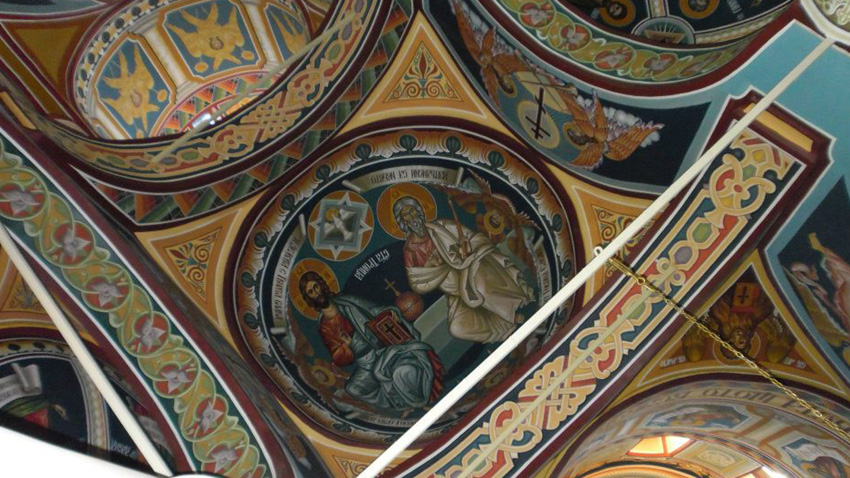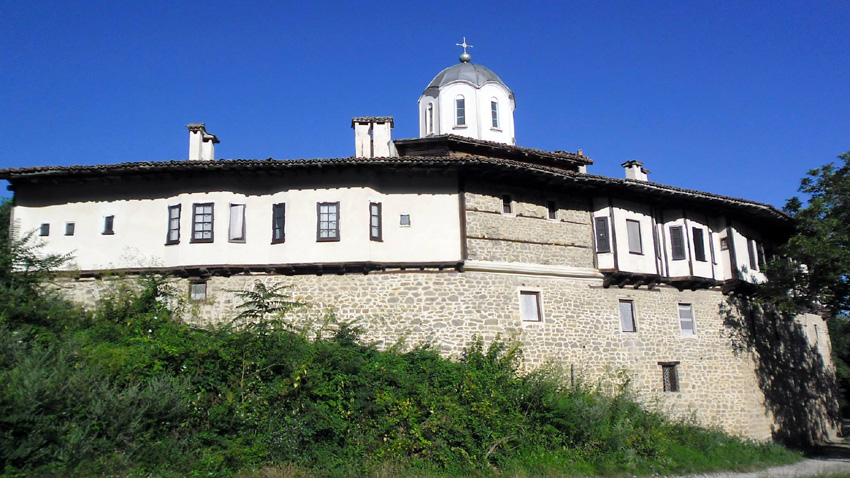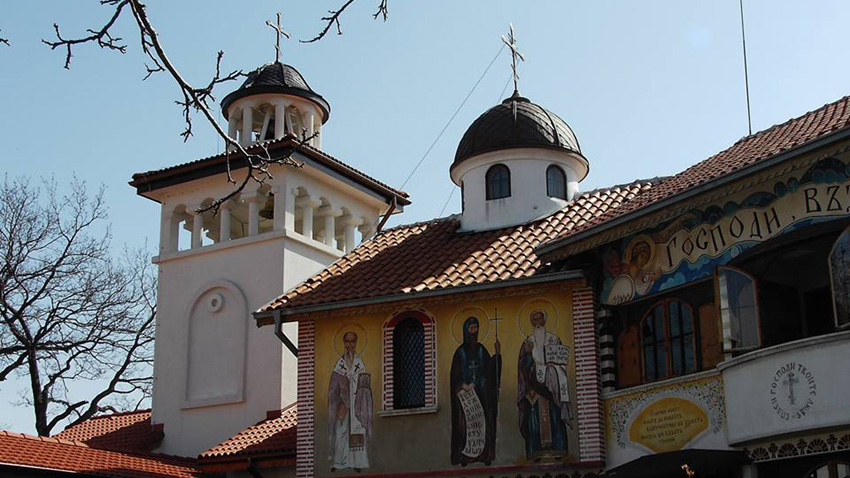There aren't that many well-preserved castles in Bulgaria. However, this country abounds in monasteries. In other words, the Bulgarian people managed to preserve their spiritual life even in the most difficult times of cultural assimilation. Most Bulgarian monasteries emerged away from big cities, usually in mountain areas, where monks made copies of religious books and established schools dedicated to Christian and Slavonic literature and art in a peaceful and quiet atmosphere. The Bulgarians chose beautiful spots for their monasteries. Those places offer wonderful view and according to some beliefs, they are closer to God. Thus, whole clusters of monasteries were formed in Bulgaria. People call them the Small Mount Athos. Nowadays, the monasteries nearby Bulgaria's capital Sofia attract many visitors. The country's former capital Veliko Tarnovo, however, is very proud of its religious complex which consists of 16 monasteries. Preobrajenski Monastery (Transfiguration Monastery) is the biggest one in that monastery complex.

Amateur photographer Kosta Marinov was impressed with most of the Bulgarian monasteries. Kosta lives in Bulgaria's capital Sofia and has visited the country's monasteries repeatedly in the past 40 years. Each time he went to those monasteries his camera captured new secrets. In 1977 the photographer visited the Glozhenski Monastery (The Monastery of Saint George) for the first time and was astounded by the beauty of the local nature and the enigmatic world of the monastery. He dedicated his weekends to visits to Bulgarian monasteries ever since. He made hundreds of photos and at the end of November 2016 launched his first exhibition with 40 selected photos from the most remarkable monasteries in Bulgaria. The place of the exhibition was not chosen by accident. The collection is displayed at the Serdika branch of the Sofia City Library at Serdika 1 Street.Thus, visitors can make a virtual trip across Bulgaria's monasteries, which remind us that our world is fleeting, yet the results of human faith and spirit are eternal.

More from Kosta Marinov:
“I always feel emotional when I make a good photo. I took hundreds or even thousands of photos so far, but only some of them make me excited when I look at them. I feel those photographs with my heart. I am usually part of a tourist group when I visit Bulgarian monasteries. However, I like to travel alone, too, because I can pay more time to what I see there. Even when I travel with friends, I prefer to be left alone with my camera, although it may seem strange. I made interesting photos of semi-destroyed monasteries such as the Garlenski Monastery. I was impressed with the fact that people collect money and offer their labor, in order to restore churches and monasteries. Even if the state does not provide any financial assistance, they manage somehow to restore the authentic look of those buildings. I came across many sanctuaries, churches and chapels which were restored and renovated with donations. I learned from my conversations with benefactors that those people love their traditions, keep their faith and do not hesitate to spend money and time on the restoration of those holy places. Many families gather near the so-called stone sanctuary crosses where they make votive offerings and pray for health, fertility and heavenly protection.”
When tourists travel by car, they cannot see enough. When they travel by bicycle, they see more and when they walk, they are able to see every single stone beneath their feet, Kosta Marinov says, adding that he likes to travel slowly. His teachers in art photography - Ivo Hadjimishev, Jorj Kyosev and Rafi Marukyan taught him to pay attention to details. I want to influence all Bulgarian citizens through my first exhibition, Kosta Marinov says.

I want to make the elderly people recall the moments they spent visiting the Bulgarian monasteries and encourage the young Bulgarians to discover the beauty of Bulgaria themselves, Kosta went on to say and added:
“I was very impressed with the frescoes at the Rila Monastery. They look fresh, because they were perfectly restored. Batoshevski monastery is also in a very good condition. However, I was disappointed with the condition of the frescoes at the Gornovodenski Monastery whose ownership was disputed until recently. Fortunately, the monastery is already under the jurisdiction of the Metropolitan Bishop of Plovdiv and I hope that it will be restored soon, because there are wonderful frescoes at that monastery.”
English version: Kostadin Atanasov
Photos: courtesy of Kosta Marinov"Bulgarian" is the title of a new bilingual book featuring the works of Ivaylo Balabanov (1945-2021), which is being prepared for print on the occasion of the 80th anniversary of the birth of the unforgettable Bulgarian poet. Printing the book in..
Canadian writer of Egyptian origin Eric Chacour is a quest of Radio Bulgaria during his visit to Sofia as one of the visiting speakers during the Month of Francophonie organized by the French Institute in Bulgaria . His award-winning debut novel Ce..
The upcoming exhibition of Bulgarian artist George Papazoff in Zagreb on 5 May 2025 was the focus of a meeting at the Bulgarian Embassy in the Croatian capital. The discussion brought together Diana Glasnova, Secretary General of the..

+359 2 9336 661
